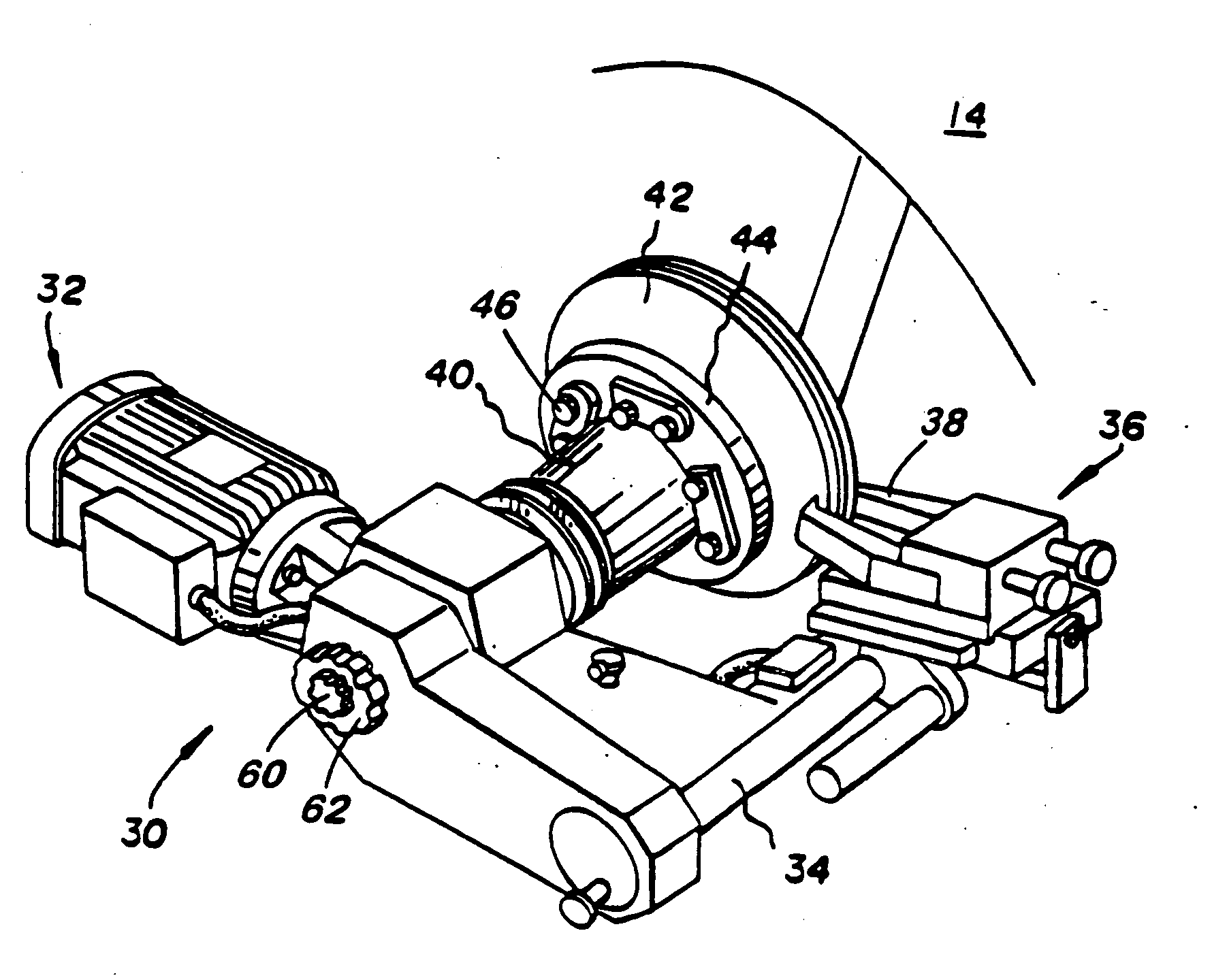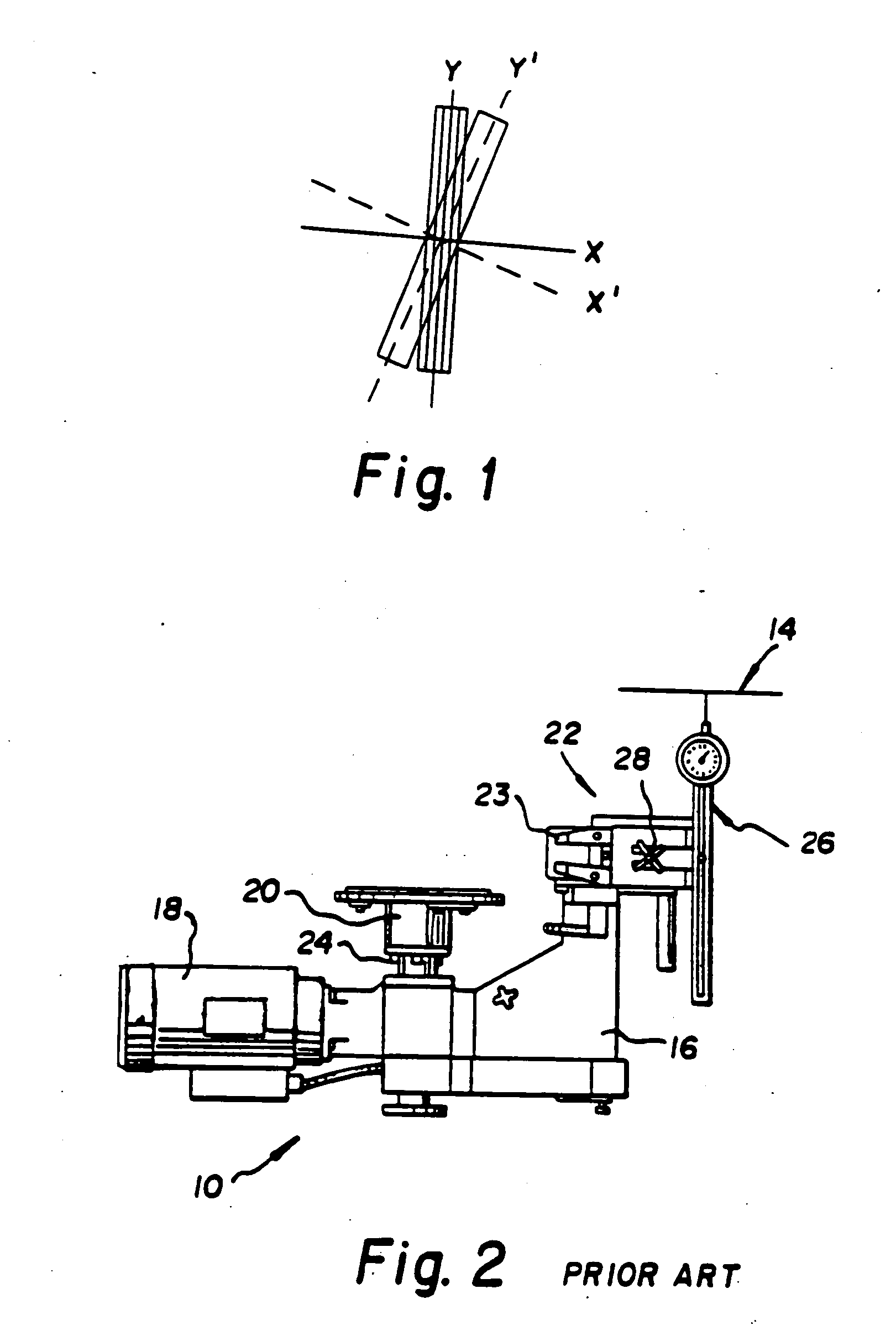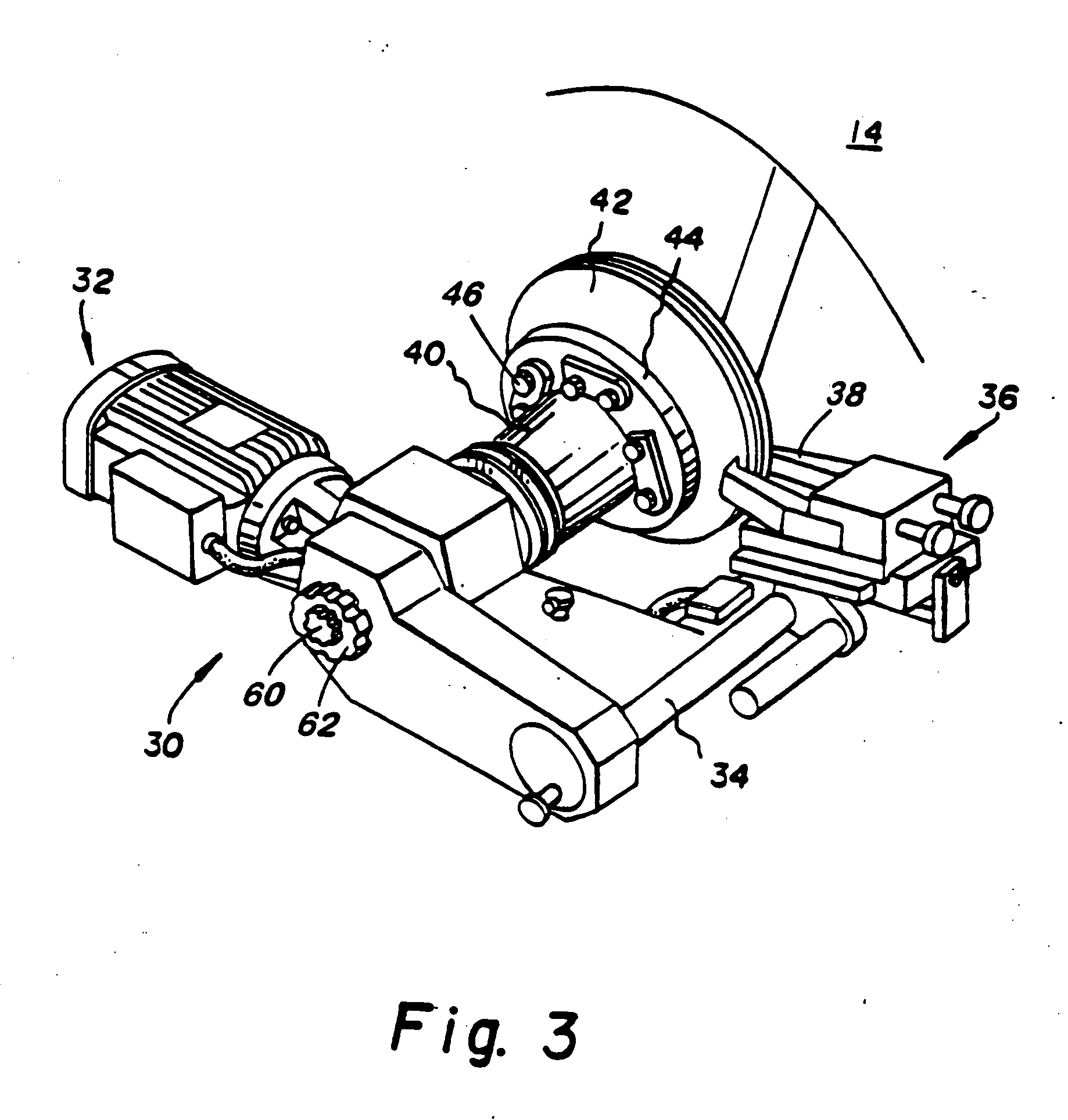Apparatus and method for automatically compensating for lateral runout
a technology of automatic compensation and lathe, which is applied in the direction of turning machine accessories, portable lathes, manufacturing tools, etc., can solve the problems of disc brake assembly producing at least a degree of lateral runout, individual component defects, and many other problems affecting the automotive industry
- Summary
- Abstract
- Description
- Claims
- Application Information
AI Technical Summary
Benefits of technology
Problems solved by technology
Method used
Image
Examples
first embodiment
[0076] A second preferred embodiment incorporates the fundamental features of those disclosed with respect to the first embodiment, but permits adjustment with only one slant disc and the output pivots in one selectable axis only when driven by the slant disc. In the first preferred embodiment, the compensation vector (explained in more detail with reference to FIGS. 11a and 11b) necessary to adjust the angle of the output adaptor 78 could potentially require adjustment of two slant discs. The fixed pivoting axis of the second preferred embodiment eliminates this problem, requiring only one adjustment, potentially reducing the time required for shaft alignment.
[0077] Referring to FIG. 10a, there is shown a cross-sectional view of the automatic alignment coupling or mechanism 120 that occupies the same position of the mechanism 50 of the first embodiment shown in FIG. 4. Input adaptor 122 attaches to the rotating shaft of the lathe machine. Shaft 124 is attached to the input adaptor ...
second embodiment
[0080] Referring now to FIGS. 11a and 11b, there is shown a schematic depicting the relationship between the compensation vector, compensation angle, and pivot axis contemplated by the alignment device of the present invention. Generally, two parameters are of importance when aligning the rotating shafts of the lathe and brake hub. The first parameter referred to as the “compensation vector” is defined by the a rotation position at which the lateral runout deflection of the brake lathe is the greatest. The second parameter referred to as the “compensation angle” is defined by the angle that the input adaptor and the output adaptor must assume in relation to each other in order to compensate for this lateral runout. In the second embodiment, the compensation vector and the compensation angle can be adjusted separately as shown in FIG. 10a.
[0081] However, in the first and third (described below) embodiments, the compensation vector is adjusted by “stopping” simultaneously the input d...
PUM
| Property | Measurement | Unit |
|---|---|---|
| time | aaaaa | aaaaa |
| angle | aaaaa | aaaaa |
| face angles | aaaaa | aaaaa |
Abstract
Description
Claims
Application Information
 Login to View More
Login to View More - R&D
- Intellectual Property
- Life Sciences
- Materials
- Tech Scout
- Unparalleled Data Quality
- Higher Quality Content
- 60% Fewer Hallucinations
Browse by: Latest US Patents, China's latest patents, Technical Efficacy Thesaurus, Application Domain, Technology Topic, Popular Technical Reports.
© 2025 PatSnap. All rights reserved.Legal|Privacy policy|Modern Slavery Act Transparency Statement|Sitemap|About US| Contact US: help@patsnap.com



